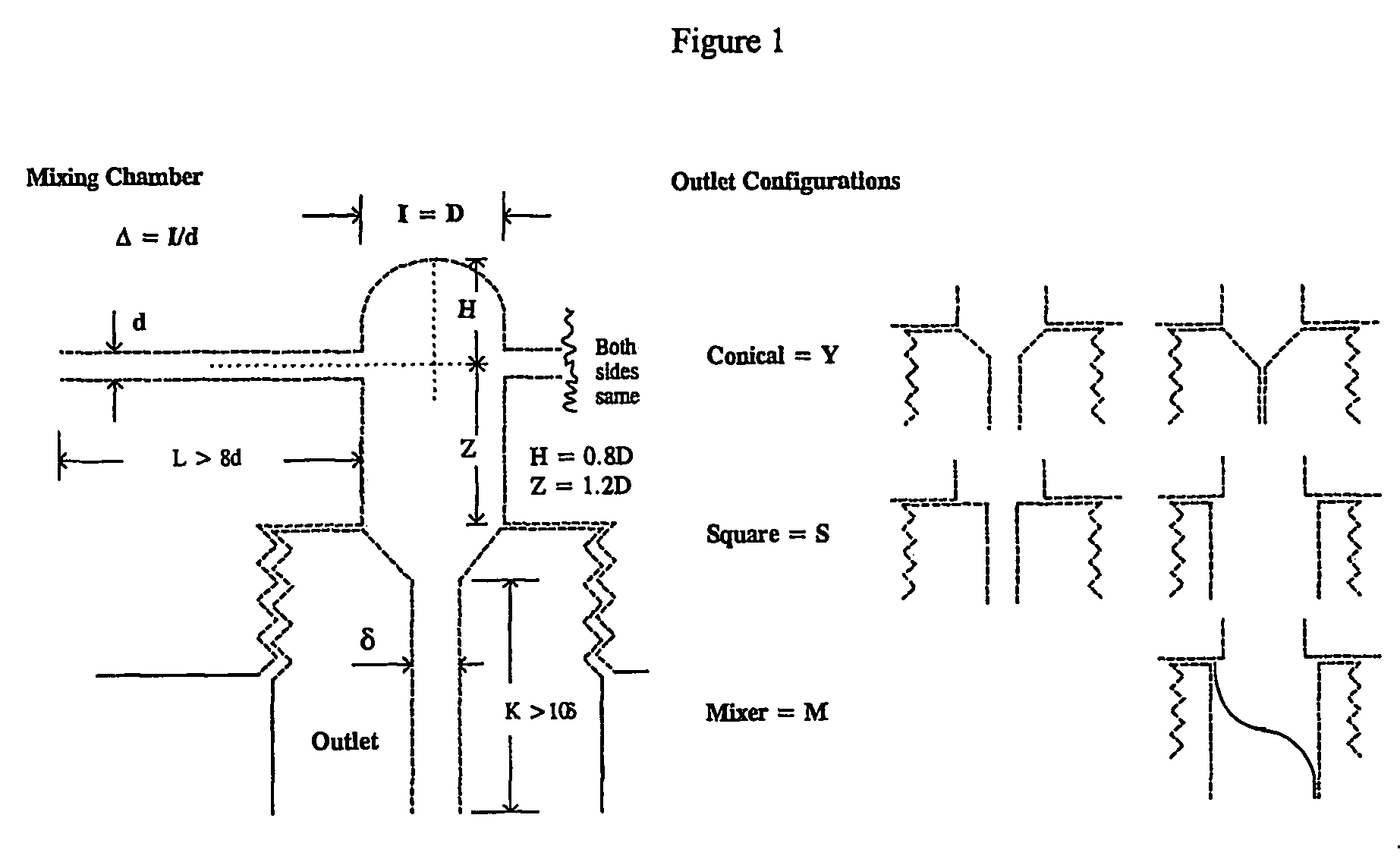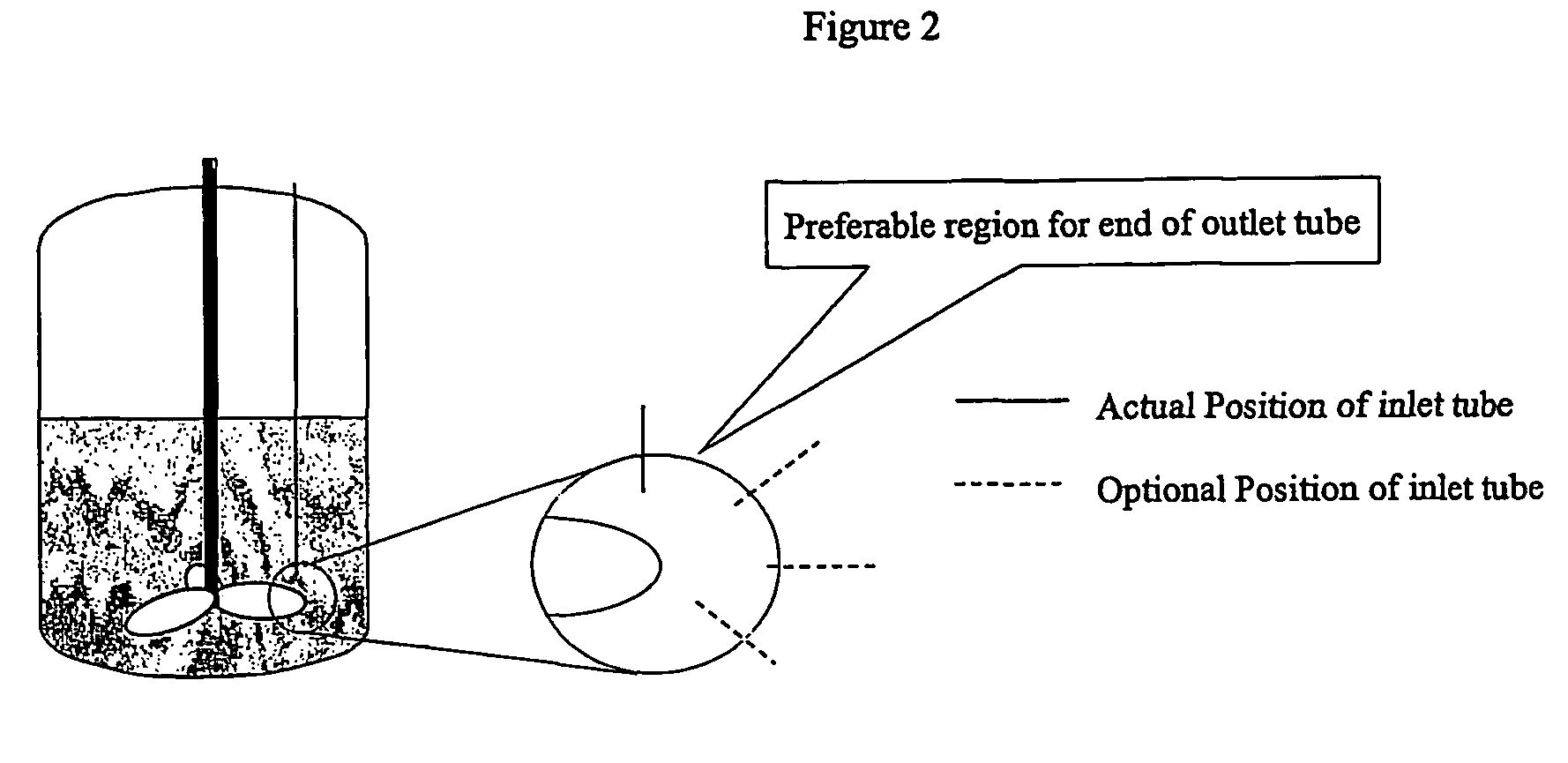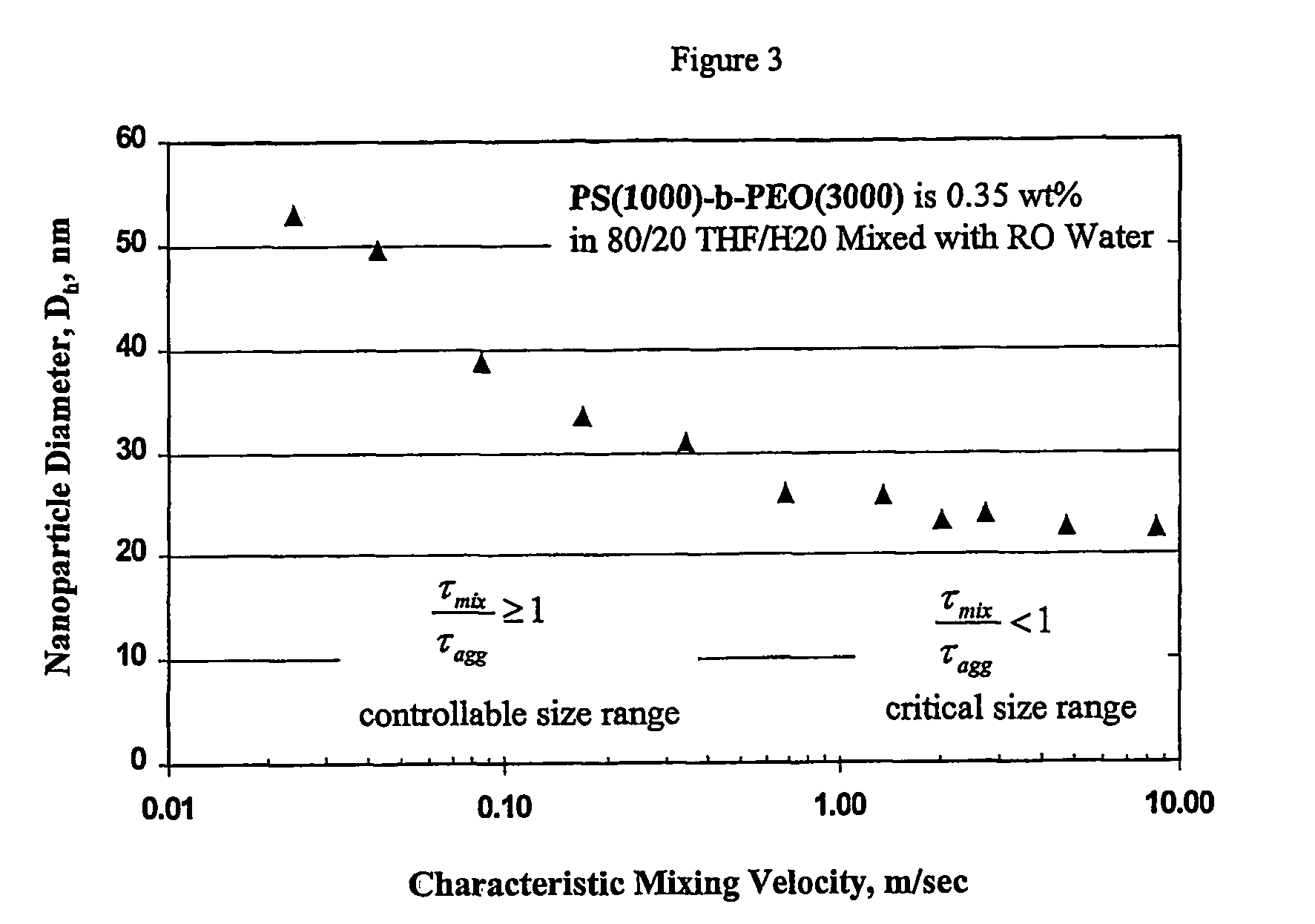Process and apparatuses for preparing nanoparticle compositions with amphiphilic copolymers and their use
a technology of amphiphilic copolymer and nanoparticle composition, which is applied in the direction of drug compositions, antinoxious agents, dissolving, etc., can solve the problems of uncontrollable and unpredictable particle size, poor yield, and current methods for forming nanoparticles by precipitation, so as to improve the resultant properties of nanoparticles, high yield, and high productivity
- Summary
- Abstract
- Description
- Claims
- Application Information
AI Technical Summary
Benefits of technology
Problems solved by technology
Method used
Image
Examples
example 1
Nanoparticles of Polystyrene-block-polyethyleneoxide (“PS(1000)-b-PEO(3000”) in Tetrahydrofuran (“THF”) and Water Made in a Continuous Flash Mixer
[0082]This example demonstrates the ability of the continuous flash mixer to produce nanoparticles that are <100 nm in diameter by controlling the mixing.
[0083]A total of 0.71 grams of an amphiphilic block copolymer, PS(1000)-b-PEO(3000), was dissolved in 152 grams of tetrahydrofuran (“THF”) and 48.4 grams of RO purified water. This mixture's concentration was 0.35 weight percent (“wt %”) amphiphilic copolymer in THF containing 20 volume percent (“volume %”) water. The solution was visually clear and free of particles. The solution was mixed at a 1:1 volume ratio with RO water entering from the second inlet in the continuous flash mixer of FIG. 1 with an inlet diameter of 0.5 mm and a conical outlet leading to a tube diameter of 1 mm. The two solvent streams were at 25° C. through the inlet tubes. The size of the nanoparticles created by t...
example 2
Nanoparticles of PS(1000)-b-PEO(3000) and β-Carotene in a 1:1 Ratio in THF and Water Made in a Continuous Flash Mixer
[0084]This example demonstrates that a pharmaceutical compound, an antioxidant and a vitamin useful for mammal administration, can be formulated as nanoparticles using amphiphilic copolymers and a continuous flash mixer to yield a surface of PEO groups. This example also demonstrates that the nanoparticles produced by flash precipitation are sufficiently stable for post processing and subsequent formulation. One hundred percent of the particles were less than 700 nm and the average particle size was less than 400 nm.
[0085]A total of 3.32 grams of β-carotene, an additive target molecule, and 3.32 grams PS(1000)-b-PEO(3000) were dissolved in 123 grams of THF at 35° C. These charges correspond to 2.6 wt % copolymer, 2.6 wt % carotene and a weight ratio of 1:1 for amphiphilic copolymer to additive target molecule. The solution was a deep red color and visually clear of pa...
example 2a
Nanoparticles of PS(1000)-b-PEO(3000) and β-Carotene in a 1:1 Ratio in THF and Water Made in a Continuous Flash Mixer
[0087]A total of 4.6 grams of pcarotene and 4.6 grams PS(1000)-b-PEO(3000) were dissolved in 166 grams of THF at 35° C., corresponding to 2.6 wt % copolymer, 2.6 wt % β-carotene, and a weight ratio of 1:1 for amphiphilic copolymer to additive target molecule. The solution was a deep red color and visually clear of particles. The process solvent stream was mixed with water, entering from the second inlet, at a volume ratio of 1:0.94 in the continuous flash mixer at a temperature of 35° C. (see FIG. 1). Both streams passed through the coil heat exchanger and entered the mixer through a 1 mm-tube. The pressure of the incoming streams were controlled at 17 psig., and the receiver was at atmospheric pressure. The mixer chamber diameter was 4.8 mm and the outlet was conical leading to an outlet tube of 2 mm. The average velocity of the process solvent stream was 4.3 m / s cor...
PUM
| Property | Measurement | Unit |
|---|---|---|
| Temperature | aaaaa | aaaaa |
| Temperature | aaaaa | aaaaa |
| Temperature | aaaaa | aaaaa |
Abstract
Description
Claims
Application Information
 Login to View More
Login to View More - R&D
- Intellectual Property
- Life Sciences
- Materials
- Tech Scout
- Unparalleled Data Quality
- Higher Quality Content
- 60% Fewer Hallucinations
Browse by: Latest US Patents, China's latest patents, Technical Efficacy Thesaurus, Application Domain, Technology Topic, Popular Technical Reports.
© 2025 PatSnap. All rights reserved.Legal|Privacy policy|Modern Slavery Act Transparency Statement|Sitemap|About US| Contact US: help@patsnap.com



